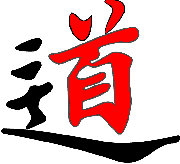
Some Western scholars are at pains to point out that the Tao cannot be equated with the Christian Creator God. They are right as far as the traditional image of God is concerned. The traditional Christian concept of God presented God as an external Creator, a Supreme Being outside the world, who rules it from a distance. But that is begging the question.
Christians too can well accept a totally different perception of divinity, a perception of God who creates the universe from within, without being himself thereby created or limited. This creation from "within" accords well with the God who is believed to be Love and to become incarnate in the world from "within".
Moreover, whether God creates from within or from without, both "Tao" and "God" refer to the same Ultimate Reality to which the universe owes its existence.
The Tao was perceived by the Chinese masters to have divine qualities. Chuang Tzu is speaking of Ultimate Reality when he tries to describe his search.
"If no one else exists, I don't exist.
If I didn't exist, I would not perceive.
I am close to the truth, but I do not know why.
There must be some primal force, but I cannot grasp the evidence.
I believe it acts, but I cannot see it.
I can feel it, but it remains intangible . . ." (Chuang Tzu 2,3).
The divine transcendence of Tao is also unmistakable in this attempt at a creed:
Tao possesses reality and substance,
but no external action or form.
It can be given; not received.
It can be obtained; not seen.
It is its own source and origin.
It existed before heaven and earth; yes from all eternity.
It makes spirits and gods divine; makes heaven and earth to be born.
It is above the zenith, yet not high; below the nadir, yet not low.
Preceding heaven and earth, it is not outdated.
Though older than oldest antiquity, it is no old." (Chuang Tzu 6,1)
Looking at an old tree, we in the West think of God as the Architect, the Artist who created it and shaped it, from outside. I remember once visiting an outdoor exhibition of sculpture in Arnhem, the Netherlands. One of the artists had placed this notice at the base of a majestic beech: "Statues are hewn by fools like me; only God could make this tree."
The Taoists looked at the inside of the tree. They saw God present, not as the super-sculptor, but as the primal force from which the tree drew its being and its specific form. Becoming aware of this divine origin was for them "great knowledge", to be distinguished from the "small knowledge" of our petty, every-day existence.
Because of our external approach, we in he West are inclined to see God's presence manifested most clearly in what is marvellous and spectacular. We are moved to think of God when we watch a sunset, a starlit sky, a school of flying fish skimming the waves. We would not normally associate God with ugly things. In fact, we feel embarrassed in our faith because God created what looks evil or imperfect. But the Taoists saw the same divine principle underlie all reality. They meditated with preference on imperfect things: gnarled oaks, hunchbacks, freak pigs with twisted snouts, earthquakes and famine. The Tao is in insects, weeds, mud and excrements.
The greatest difference, perhaps, lies in the Taoist perception of their own involvement. For they knew that the Tao they became aware of in other things was the same Tao living in themselves. That is why the sacred oak could rebuke the carpenter: "Who are you, useless creature that you are, to judge me to be a useless tree?" By getting to know the Tao, one begins to understand oneself. But the opposite is also true. "One only gets to know things by knowing oneself."
Because the Tao is nameless and beyond words; because it lies under the surface of sense perception; because it unites apparent opposites on a deeper level; in short, precisely because it is divine and beyond change and turmoil, it can only be found in silence. This is the greatest paradox and the deepest insight. God is found within, in the apparent void, in the profound emptiness from which all power and life radiates in all directions.
"Thirty spokes share the wheel's hub;
it is the hole in the centre that makes it work.
If you shape clay into a vessel,
it is the emptiness within that defines its use.
If you cut doors and windows to make a room,
it is the openings that render it habitable.
Profit may come from what is there;
its use comes from the Nothing within." (Tao Te Ching 11)
The Nothing within us is the source of all our energy. It is the well we should more consciously draw from. But how will we, workaholics, activists, busybodies, ever learn to enter that infinite cavity of inner silence and emptiness?
Text from: JOHN WIJNGAARDS, God Within Us, London 1988.